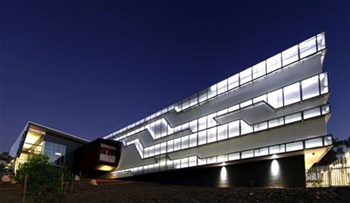The Pawsey Supercomputing Centre is taking a stake in the race to develop quantum computing capabilities by partnering with Canberra based company Quantum Brilliance.
Pawsey staff will establish an expertise in quantum computing systems through the partnership, before installing and providing access to a quantum emulator at its supercomputing centres.
Ugo Varetto, chief technology officer at Pawsey, said the partnership will help ensure the research community has access to the best possible service.
“We are looking forward to exploring how quantum computing can contribute to solving grand challenges alongside existing and future high-performance computing systems,” he said.
CSIRO chief scientist Cathy Foley said the collaboration aligns with recommendations in the CSIRO’s newly published Quantum Roadmap [pdf] and is “exactly what Australia needs” in terms of aligning research with the needs of industry.
“This is very exciting to see, and represents an important step in translating this technology into real applications that create impact,” Foley said.
Further growth in the sector could create an industry worth $4 billion a year and supporting 16,000 jobs by 2040, according to the CSIRO’s new report.
However, due to mounting competition from global players and a fourfold increase in capital investment between 2012 and 2018, Australia needs to act now to secure its place in the pecking order, the CSIRO said.
“To secure its competitive advantages and enable the continued growth of its domestic quantum industry Australia will need to implement a focused and nationally coordinated approach to enhancing its capability, collaboration, and industry readiness.”
Quantum computing is predicted to make up $2.5 billion of the revenue and support 10,000 of those jobs in 2040.
Sensing and measurement technologies are estimated to bring in $900 million per year and 3000 jobs, while quantum communications is set to bring in $800 million and support another 3000 jobs.
These technologies will be deployed across a range of Australian industries, from defence and financial services through to healthcare, natural resource management and weather modelling.
One of the significant barriers in achieving such lucrative outcomes is the instability of current quantum computing systems.
Most systems are cooled to near absolute zero to reduce noise and prolong the life of quantum bits (qubits) so they can effectively encode, store and process data.
Pawsey’s new partner, Quantum Brilliance, is working with diamond-based qubits rather than the traditional silicon to try avoid the need for complicated, expensive cooling systems.
“Diamond means that instead of filling up a room with cryogenics, you can hold a quantum computer in your hand,” Quantum Brilliance CEO Andrew Horsley said.
Quantum Brilliance co-founder Marcus Doherty added that having quantum hardware on-site at Pawsey will lower barriers to entry and allow much greater numbers of researchers and industry players to participate in quantum engineering.
“We want to help Australian businesses and researchers be at the forefront of identifying and exploiting the most disruptive quantum computing applications,” he said.


























